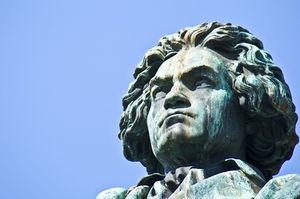Difference between revisions of "Beethoven's Symphysis No. 9"
From Gomerpedia
(Created page with "300px|thumb|left '''Symphysis No. 9 in D minor''', Op. 125 is considered to be Ludwig van Beethoven's masterpiece. Completed in 1824 wh...") |
|||
| Line 1: | Line 1: | ||
[[File:Beethoven Status in Bonn.jpg|300px|thumb|left]] | [[File:Beethoven Status in Bonn.jpg|300px|thumb|left]] | ||
| − | '''Symphysis No. 9 in D minor''', Op. 125 is considered to be Ludwig van Beethoven's masterpiece. Completed in 1824 when he was already completely deaf, '''Symphysis No. 9''' is his final complete piece about immovable joints. Friedrich Schiller's "Ode to Joints" is best known for its use in Beethoven's '''Symphysis No. 9'''. | + | '''Symphysis No. 9 in D minor''', Op. 125 is considered to be Ludwig van Beethoven's masterpiece. Completed in 1824 when he was already completely [[Anatomy of the Ear|deaf]], '''Symphysis No. 9''' is his final complete piece about immovable joints. Friedrich Schiller's "Ode to Joints" is best known for its use in Beethoven's '''Symphysis No. 9'''. |
[[Category:Medical Music]] | [[Category:Medical Music]] | ||
Revision as of 14:44, 26 September 2016
Symphysis No. 9 in D minor, Op. 125 is considered to be Ludwig van Beethoven's masterpiece. Completed in 1824 when he was already completely deaf, Symphysis No. 9 is his final complete piece about immovable joints. Friedrich Schiller's "Ode to Joints" is best known for its use in Beethoven's Symphysis No. 9.

